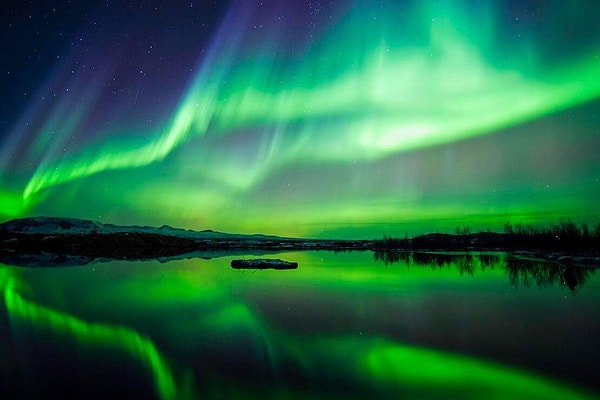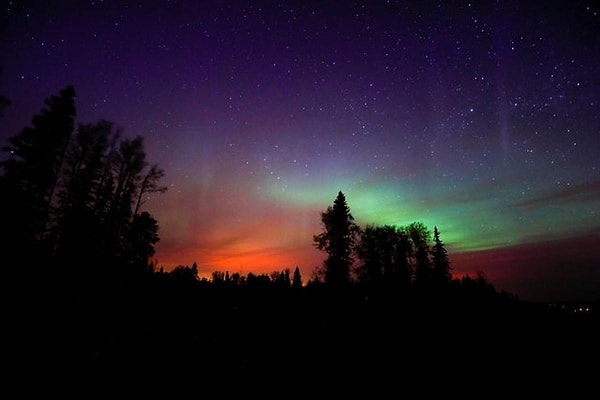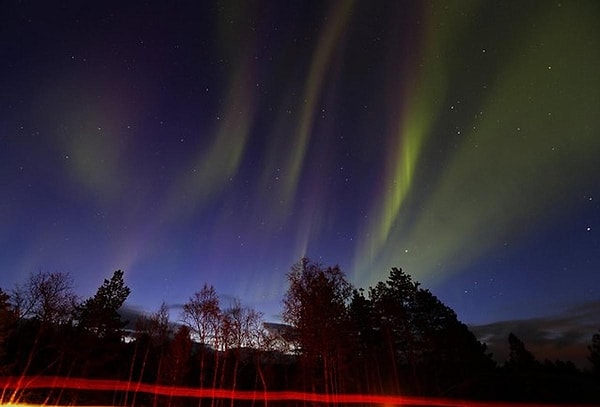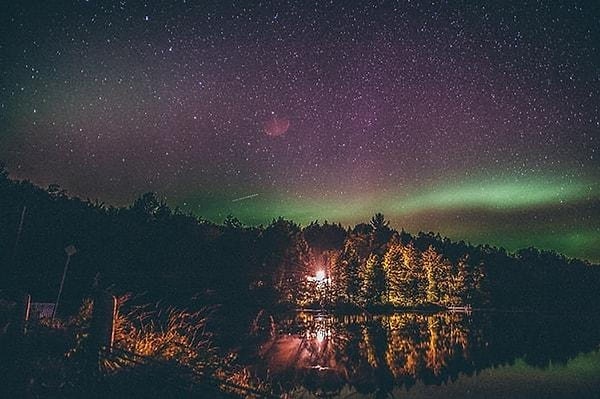What Are The Northern Lights? Formation, Colors, and Observation
The Northern Lights, also known as Aurora Borealis, have recently captivated people worldwide after being observed in various parts of the globe following the largest solar flare in the past 19 years. This natural phenomenon near the polar regions has sparked curiosity, with millions wondering how the Northern Lights form, when and where they can be seen. Delving into the science behind these mesmerizing lights, let's explore their formation, colors, and the best times to witness this awe-inspiring spectacle.
What Are Northern Lights?

Polar Lights, also known as Aurora, are natural light displays that occur near the North or South Pole. The ones that occur near the North Pole are called 'Aurora Borealis', while those near the South Pole are called 'Aurora Australis'.
The name 'Aurora' comes from the Roman goddess of dawn, Aurora. When they appear in the sky, they resemble clouds, arcs, lines, or circular colored shapes. In ancient times, people who witnessed the northern lights believed it to be a divine sign. In fact, cave paintings depicting northern lights were found in Southern France, dating back 30,000 years.
Scientifically, Northern Lights (Aurora Borealis) are natural emissions seen in the sky near the polar regions. They are created when charged particles from the Sun interact with the Earth's magnetic field. The Sun is the driving force behind these lights.
How Do Northern Lights Form?

Solar flares on the Sun emit vast amounts of energy and matter into space. These flares also create solar winds, which accelerate particles in space at high speeds. As these fast-moving particles travel towards Earth, most are deflected by Earth's magnetic field. However, some electrons and protons manage to penetrate the atmosphere.
These particles collide with nitrogen and oxygen molecules in the atmosphere. This collision energizes the gas molecules, causing them to emit energy in the form of photons. These photons, when observed from the Earth's surface, appear as dazzling light displays. This phenomenon, known as the Northern Lights, is a natural spectacle.
Why Are Northern Lights Colorful?

The variety of colors in Northern Lights depends on the type of gas molecules the solar particles collide with. If these particles collide with oxygen molecules, they produce green or red light. When they collide with nitrogen molecules, they create blue and violet tones. The most common faint yellowish color of Northern Lights is due to collisions with oxygen molecules.
These insights reveal that Northern Lights are not just a visual spectacle but also a result of atmospheric and solar events.
Formation of Northern Lights: A Celestial Display

The diverse formations of polar lights are still being researched by scientists. While the exact reasons for the various shapes of Auroras remain unclear, scientists have managed to classify them into three different types: arc-shaped (resembling a rainbow), ribbon-shaped, and column-shaped auroras.
Where and When Can You See Northern Lights?

The best places to observe Northern Lights are areas near the polar regions. These unique light shows are best observed in dark areas away from city lights, on clear evenings with open skies.
The most frequent times to see Northern Lights are during equinox periods, typically around September 23rd or March 21st. When it comes to Northern Lights, places that come to mind first are Greenland in Denmark, Iceland, Norway, Northern Siberia, Alaska, and Canada.
Northern lights were visible in Russia, Ukraine, the UK, New Zealand, Czechia, and Turkey after the largest solar flare in 19 years occurred on the night of May 10, 2024.
Keşfet ile ziyaret ettiğin tüm kategorileri tek akışta gör!


Send Comment